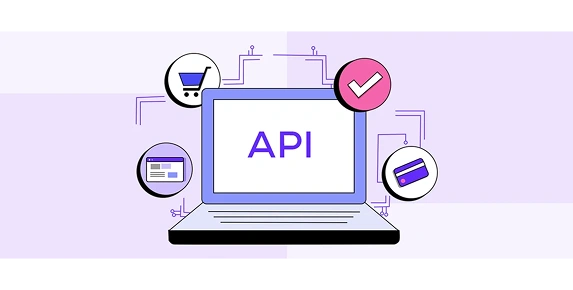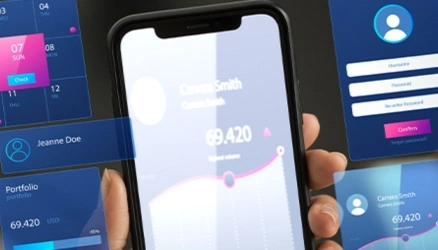By: Nilesh Jain
|
Published on: June 17, 2025
When designing digital products, websites, apps, or enterprise software, it's easy to overlook how people with disabilities experience them. Accessibility testing ensures that your product is usable by everyone, including individuals with visual, auditory, motor, or cognitive impairments.
Accessibility is not just a compliance checkbox. It's a commitment to good design, legal protection, and a broader user base. Inclusive design principles require us to consider all potential users from the start, not as an afterthought. And the role of accessibility testing is central to making that happen.
What Is Accessibility Testing?
Accessibility testing is the process of evaluating digital interfaces like websites, mobile apps, or software systems to ensure they can be accessed and used by people with various disabilities. It covers compliance with guidelines like WCAG (Web Content Accessibility Guidelines) and laws such as the ADA (Americans with Disabilities Act) or Section 508.
At its core, accessibility testing in UX is about usability. It’s not just about screen readers or keyboard navigation. It’s about making your product functional for everyone, regardless of their limitations.
Why Accessibility Matters in UI/UX
Imagine a user trying to navigate your website using only a keyboard, or someone relying on voice input due to a motor disability. If your site isn’t designed to accommodate them, you’re excluding real users.
The importance of accessibility in UI/UX goes far beyond visual appeal. It's about real-world usage:
-
Can someone with color blindness distinguish between error messages and valid inputs?.
-
Can a screen reader describe every button or link?
-
Can a user zoom in without breaking the layout?
Accessibility in web design is now a requirement, not a bonus. It directly impacts SEO, user retention, bounce rates, and conversion.
Principles Behind Inclusive Design
Inclusive design in software means building with flexibility and adaptability in mind. It doesn’t aim to create one solution for all, but rather to create multiple ways for users to interact.
Here are some key inclusive design principles:
-
Recognize exclusion – Start by understanding who is being left out.
-
Solve for one, extend to many – When you design for someone with a disability, others benefit too.
-
Build for context – Design should support varying environments, devices, and user needs.
Accessibility testing services help translate these principles into real functionality.
Role of Accessibility Testing in Inclusive Design
The role of accessibility testing is to ensure your design assumptions hold true for real-world users. Accessibility compliance testing can:
-
Uncover issues with screen readers, contrast ratios, and alternative text
-
Identify gaps in keyboard-only navigation
-
Verify WCAG compliance
Many companies only test for accessibility at the final QA stage, which often leads to costly rework. Accessibility testing should be embedded throughout the design and development process.
At Vervali, we integrate accessibility testing from wireframes to final release, offering both manual and automated checks through our accessibility audit services.
Book a free consultation with our accessibility testing team today.
Accessibility Testing for Websites and Mobile Apps
Let’s break down how accessibility applies to different platforms:
Websites
-
ALT text for images
-
ARIA roles for better semantic markup
-
Focus management for keyboard users
-
Color contrast compliance
Mobile Apps
-
Support for screen readers like TalkBack and VoiceOver
-
Tap target sizing and spacing
-
Labeling for buttons and form fields
Whether you're a startup or enterprise, accessibility testing for websites and mobile apps protects you from legal risks and ensures your users stick around.
Need accessibility testing for your app or site?
Accessibility Compliance & Legal Risks
Failing to meet accessibility standards can lead to lawsuits, fines, or public backlash. Brands like Domino’s Pizza and Target have faced legal action over non-compliant websites.
WCAG compliance testing is no longer optional. It's a legal shield and a moral responsibility. Vervali’s accessibility testing services include:
Why Work with an Inclusive Design Agency?
Partnering with an inclusive design agency like Vervali means:
Our team combines software testing services with digital accessibility services, ensuring your product is inclusive, functional, and user-friendly.
Frequently Asked Questions (FAQs)
It helps create usable interfaces for all users, including those with disabilities, improving user experience and reducing bounce rates.
Screen reader compatibility, keyboard navigation, contrast ratios, form labeling, and WCAG compliance are essential elements.
By using screen readers like TalkBack or VoiceOver, testing tap targets, and checking text scaling and color contrast.
It involves testing digital interfaces against the Web Content Accessibility Guidelines to ensure inclusive usability.
Any business or product with a website, software platform, or mobile app should conduct accessibility testing to ensure usability and legal compliance.
They focus on designing products that accommodate the widest range of users, including those with impairments or different abilities.











































































